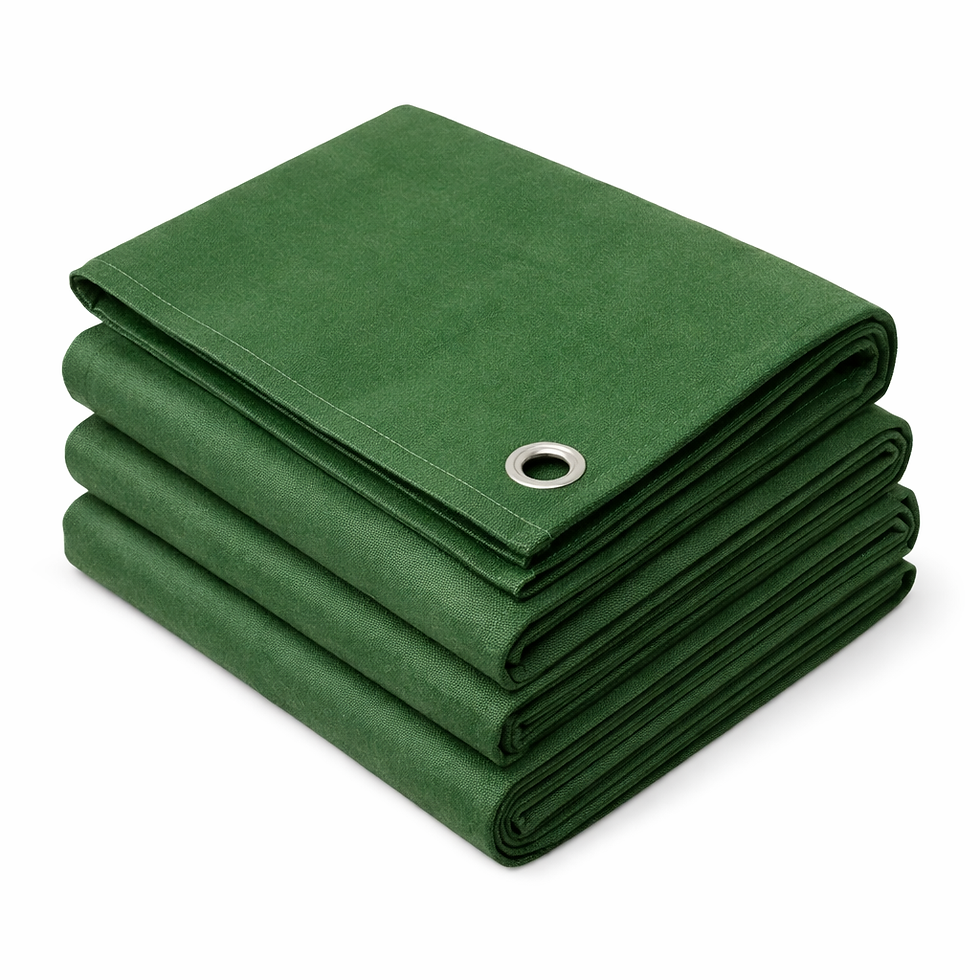Best Knots and Fasteners for Tarpaulins
- Bradley Tomlinson

- Sep 5, 2025
- 4 min read
Tarpaulins are strong sheets that provide waterproof protection from rain, sun, or wind. Tarpaulins can be used when camping, building shelters, or covering outdoor items. In order to keep a Tarpaulin in place, it must be tied down properly using knots or secured using fasteners. By using the best way to tie a tarp down, you can make your tarp last longer and safe from blowing away. The following guide will provide you with some of the best knots and fasteners to use for tarpaulins.
Why Knots and Fasteners Matter
When you set up a tarp, you need it not to be flopping in the wind or falling on its own. If a tarp is not tied correctly, it could tear, slip, or leave your things unprotected. One good knot, or fastening, helps hold the tarp tight and steady. It will also make it easier to set u, or take down, when you are done. The right knot, or fastening, depends on what you are using it for, the weather, and how long you need the tarps to stay up.
Simple knots for beginners
Nobody could be blamed for not knowing how to tie knots that are complicated knots. There are some simple knots that anyone can learn. The overhand knot is likely the simplest knot that you can use and tie. It is akin to just tying the first part of your shoelace. It is not the strongest knot, but it can keep a rope from slipping through a hole in the tarp. Another simple knot is a half hitch. You tie a half hitch by simply wrapping the rope around an object (here, a pole), and then you simply tuck or loop the rope back onto itself. This knot is good for holding a tarp in one position for a short amount of time.
Stronger Knots for Better Hold
If you require even more strength, some knots can withstand more tension. The taut-line hitch is commonly considered a camping knot because it allows for adjusting the tension of the rope without having to untie the knot. Which is really nice to know about, when you want the tarp to stay tight, despite the stretching of the rope or changes in the wind. Another good knot is the bowline. It is sometimes called the “king of knots” since it is strong and won’t slip. The bowline knot creates a size-fixed loop at the end of the rope, which makes it ideal for hooking onto a pole or peg.
Using Fasteners With Tarps
If knots are not enough, or you might prefer to take a quicker route to secure a tarp, then fasteners may come in to serve a purpose. Bungee Cords are stretchy ropes with hooks on both ends. Bungee cords can hold a tarp firmly, while enabling the tarp some flexibility when the wind blows. Some people also use ball bungees. They are great as they loop through the grommets of the tarp, then wrap around poles under tension without harming the fabric. Rope clamps are useful, too, in that they allow for a tight hold without needing to know several knot-tying techniques.
Clips and Grippers for Extra Strength
If your tarp lacks grommets or has weak ones, you can use tarp clips or grippers. These little tools grip the edge of the tarp and create a new spot where you can tie a rope or hook a rope. The clips or grippers work well for older tarps or for a situation where you need additional anchor points. Certain grippers even lock in place and hold tightly in windy conditions. Tarp clips and grippers are portable and easy to attach and remove, so they can be useful for short or extended periods of usage.
Choosing the Right Method
The optimal decision between knots or fasteners ultimately depends on your needs. If you have only one night of camping, simple knots or bungee cords will probably be sufficient. If you are covering something for weeks, you would want a stronger knot, like a bowline, or use tools like tarp grippers. It will also depend on how much weight or pressure the tarp will have to withstand. A tarp that is used as a roof and is facing heavy rain will require more support than a tarp covering firewood in your backyard.
Tips for Keeping Tarps Secure
Regardless of your method, always inspect your tarp after it's set up. Make sure it is taut but not so tight that you tear it. If the wind is really strong, then you should place more ropes or fasteners to lessen the pressure. If the weather changes, keep an eye on the tarp and adjust knots or fasteners when necessary. A well-secured tarp not only protects your gear but will last much longer.
Conclusion
Canvas Tarpaulin sheets can be a tremendous asset in multiple situations if you attach them properly. Using a few basic knots and the right fasteners can change both a moment's entertainment or your complete camping experience. Whether you are camping, working outside, or protecting your belongings at home, proper attachment methods can keep your tarp rigid and secure. Once you practice and feel comfortable, you will be able to set up a tarp fast and trust it to stay put in any weather.









Comments